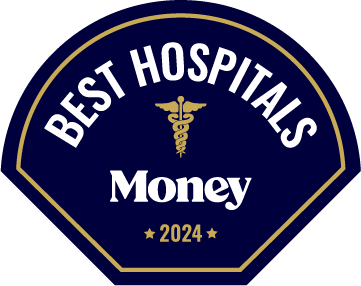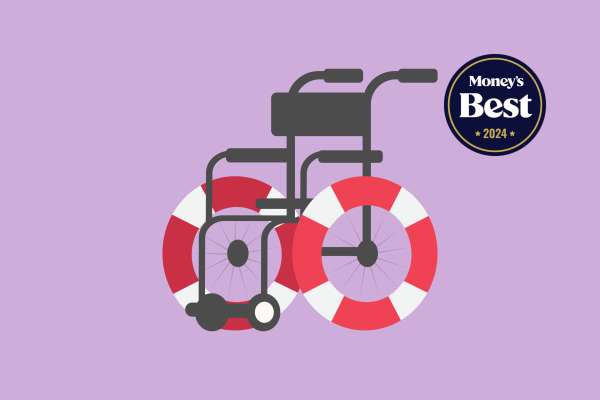To determine the best hospitals for cardiac care, Money compiled and analyzed more than 125,000 data points.
As with all of our hospital rankings, our best hospitals for cardiology are those that stand out among all short-term, acute-care hospitals in the country and also offer deep expertise – based, in this case, on data that reflects the overall experience of the cardiologists and other heart specialists who work at each place.
Our data partners for this ranking were Denniston Data and Definitive Healthcare. We also relied on publicly available data from the American College of Cardiology.
Here’s a closer look at how we determined the winners.
Narrowing the list to high-quality facilities overall
We began shaping the list by limiting it to short-term, acute-care facilities that have received either a four- or five-star quality rating from the Centers for Medicare & Medicaid Services (CMS).
The CMS rating (included on the hospitals ranking as “Federal Rating”) is based on five key factors that are weighted as follows:
- Mortality (22%): reflects the death rates related to cardiovascular issues, strokes, pneumonia and treatable complications after surgery
- Safety (22%): tracks the rate of infections associated with certain surgeries, IVs and catheters and rates of complications after specific procedures
- Readmission (22%): considers how often some patients are readmitted to the hospital, along with how long they stayed and whether there were unplanned visits for outpatient treatment
- Patient experience (22%): gauges whether patients had a positive experience based on their self-reported ratings of how well their doctors and nurses communicated with them; other factors include whether their bathroom was clean and their room was quiet at night
- Timely and effective care (12%): estimates how quickly patients received care for chest pain or strokes; how long they stayed during an ER visit; percent of health care staff who are vaccinated for flu and COVID-19 and other time-sensitive metrics
While the CMS ratings reflect the hospital’s overall quality, across all types of care, it’s worth noting the presence in the data of several metrics related to cardiac treatment, and emergency heart care in particular. These include readmission and mortality rates for heart attack and heart failure patients, as well as how quickly a patient exhibiting heart-attack symptoms received care.
Highlighting cardiac expertise
As with our other hospital lists, we then turned to the experience of hospital providers to begin determining how the facilities should rank against one another. Our data partner Denniston Data measures quality care by identifying high-performing doctors and other health care providers based on their level of experience in particular areas – in this case with cardiac procedures.
We rewarded hospitals for their staffs’ collective experience in the form of a Composite Ranking Score (CRS). To be considered for this sub-ranking, facilities must have had active cardiologists or cardiac surgeons on staff who could be measured by cardiac experience.
The CRS was a percentile that we then translated into a letter grade. The letter grading system is based on this percentage range:
- A+ is a CRS score of 95% to 100%.
- A is 85% to 94.99%.
- A- is 80% to 84.99%.
- B+ is 75% to 79.99%.
- B is 65% to 74.99%.
- B- is CRS 60% to 64.99%.
- C+ is 55% to 59.99%.
- C is 45% to 54.99%.
- C- is 40% to 49.99%.
- D+ is 35% to 39.99%.
- D is 25% to 34.99%.
- D- is 20% to 24.99%.
- F is below 20%.
Money weighted this experience factor at 70% of the overall grade.
We devised an additional ranking factor based on how often a hospital performs common cardiac procedures and whether the facility has designated beds for coronary intensive care.
Additionally, we considered whether a hospital was affiliated with the American College of Cardiology, a nonprofit accrediting body. Affiliation with the ACC denotes a hospital’s high level of focus on cardiology. We also gave preference to hospitals that have received awards, distinctions or other designations from the ACC.
Collectively, these cardiac quality measures make up a cardiology-focus score, which we weighted as 15% of the overall grade.
Rewarding stand-out care, based on federal data
We returned to the federal CMS quality scores – initially used to cull the list of candidate facilities – to award the remaining portion of the overall score.
Specifically, we extracted from the federal data each hospital's patient experience score. This metric gauges patients’ self-reported satisfaction with factors such as how well their doctors and nurses communicated with them, and whether their bathroom was clean and their room quiet at night.
In terms of quality (as defined above), we gave preference to hospitals that received five stars from CMS.
These scores constitute the remaining 15% of a hospital’s overall score.
Measuring price transparency
The ability to accurately know in advance what a procedure or visit will cost you is vital to avoiding surprises and accurately planning the costs of a hospital stay.
As an additional criterion to help you choose the right hospital, Money developed a price transparency grade for each hospital we ranked. This financial metric is unweighted and is separate from a hospital's overall grade or position on our rankings.
After consulting healthcare data experts at Denniston and the nonprofit RAND Health Care, Money analyzed the extent to which a hospital’s publicly listed prices (known as chargemaster prices) accurately align with the revenue the hospital receives from patients or Medicare. In effect, we wanted to know: Is the listed price similar to the amount that you’re billed after you’re discharged?
We used two ratios to measure this. The first compares the hospital's chargemaster prices and its gross patient revenue, whether paid by uninsured patients or insurance companies; the second ratio is between the gross billed amount and the total amount approved by Medicare. Weighted equally, these ratios were standardized on a 100-point scale and translated into a letter grade based on the same ranges as listed above for the CRS.
The result: our Price Transparency measure. The lower a hospital’s grade on this measure, the wider the gap between its list prices and what patients have actually paid; the higher the grade, the smaller the difference between the facility’s public prices and the actual bills it issues.
In almost all cases, patients pay less — and often far less — than the publicly listed prices. While this practice is technically discounting, the reality is that many hospitals publicly listed exorbitant chargemaster prices that then get negotiated down by insurers, the federal government or the patients themselves behind closed doors, thus obfuscating what hospital care truly costs and keeping prices high overall.
Keep in mind that the price transparency grade does not necessarily mean that a hospital with a B+ is cheaper than the hospital with a C. Rather, it means its publicly listed prices are more accurate, which can better help you financially prepare for your stay.
Vetting the top-scoring hospitals
Not every drawback to a hospital will emerge within the data we analyzed. So Money also individually vetted the list of top-rated hospitals for any red flags that transcend the numbers we crunched.
As a result, we purged from the list several hospitals at which patient care had been compromised in a manner that suggested underlying issues in the facility. These trouble signs included upheld complaints of sexual assault, racial discrimination, unnecessary treatment and/or malpractice.
The result is the top 75-rated hospitals for quality cardiac care, handpicked by Money’s editorial staff.
Data sources: Denniston Data Inc; Definitive Healthcare
Supplementary data: Agency for Healthcare Research and Quality; American College of Cardiology; Centers for Medicare & Medicaid Services; RAND Health Care






